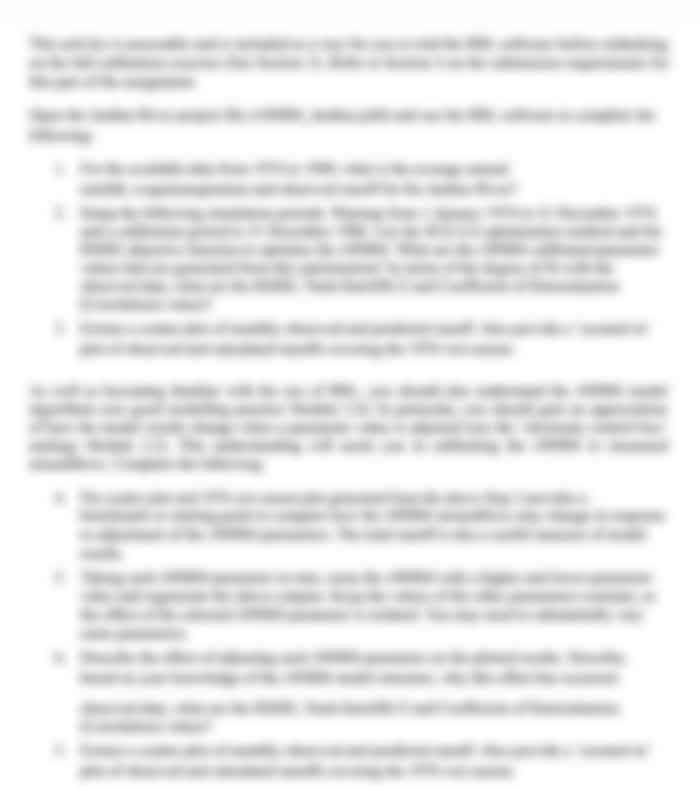FIN 330: INVESTMENT AND SECURITY ANALYSIS ASSESSMENT
- Subject Code :
FIN-330
- University :
McNEESE COLLEGE OF BUSINESS Exam Question Bank is not sponsored or endorsed by this college or university.
- Country :
United States America
According to this project, the student will be entrusted with the task of selecting and managing a three- stock portfolio with a total amount of hypothetical funds not exceeding $3,500,000.
Introduction
Purpose: here student would summarize educational purpose of the project and give a summary of the project and its results.
Goal: Here you would state whether you plan to outperform the market or perform like the market as measured by a market index (S&P 500 Stock Index, The Dow, etc.)
Investors Objectives
Risk aversion: Here you would state how much tolerant you are in terms of taking risk. Are you risk averse or willing to take more risk in your investment? Your attitude towards risk help you pick the stocks with the appropriate risk, using measures of risk (beta and standard deviation).
Income vs. growth: Do you prefer to receive income (stock dividends) or you would rather invest in growth stocks which would appreciate in value in the long run. Your preference help you pick the appropriate stocks.
Asset allocation and diversification: Here you would decide on the percentage you would invest in each one of the three stocks. You could decide whether you want to invest equally in each stock.
Economic Assessment (Read Chapter 12, Bodie, Kane, and Marcus prior to your assessment)
Here you will include your own assessment of your expectation for the future of the security market conditions. The assessment is made in the light of the direction of the national and international economies, and it is undertaken by identifying signals given by economic indicators published periodically by the financial media.
Industry Outlook (Read Chapter 12, Bodie, Kane and Marcus prior to your industry selection)
Here you would highlight the most promising industries. Make sure to elaborate on the fundamentals that led you to believe that they would be doing well during your future investment horizon.
Company Analysis (Read Chapter 12, Bodie, Kane and Marcus prior to your stocks selection)
This section is made up of two parts. In the first part, you would rely on your Objectives and your conclusions in the Industry Analysis to help you pick and profile your specific securities in the portfolio.
In the first part, you would rationalize your selection by reporting here some fundamental measures such as stock's based on published data about each stock.
Price-to-earning (P/E) ratio PEG ratio
Price-to-book ratio Price-to-sales ratio Dividend yield Beta
Sources of Information: You may visit many relevant finance websites to get the data on those stocks you picked. References should be cited in the text, below the tables, and in a separate References section at the end of your final report.
Performance Measurement/Evaluation
Here student would follow the following steps:
Step 1. Prepare a spreadsheet for each stock with the following information:
Record the weekly closing prices of the stock, and dividends received, if any.
Record the weekly closing values of stock market index (Standard & Poors 500 Stock index).
Calculate the weekly return of the stock
(ri)
Calculate the weekly return of the stock market
(rm)
At the end of the semester, use regression technique to estimate stocks beta. (see the attached regression Summary Output.
At the end of the semester, calculate the holding-period return and standard deviation of the stock.
Prepare a spreadsheet for stock A (use the same format for your stocks)
|
Weekly recording |
Stock weekly price (P) |
Weekly stock return ( ri) |
Market index reported |
Market weekly return (rm) |
|
1 |
||||
|
2 |
||||
|
3 |
||||
|
4 |
||||
|
5 |
||||
|
6 |
||||
|
7 |
||||
|
8 |
||||
|
9 |
||||
|
10 |
||||
|
Average return of stock A |
x |
x |
||
|
Standard deviation of stock A |
||||
|
Beta of stock A |
Step 2. Prepare a spreadsheet for the whole portfolio with the following information:
Calculate the weekly return of each stock with its weights.
Calculate the weighted average weekly return of the portfolio .
Calculate the weekly return of the market as done in step 1 above.
Use regression to estimate the portfolio's beta
Use regression to estimate Jensen's alpha (regress the portfolio's excess return on market's excess return. Excess return means the return in excess of risk-free rate).
Step 3. Report the following performance measures:
Semester's return of the portfolio (r
p
)
Semester's standard deviation of the portfolio (?
P
)
Semester's return of the market
Semester's standard deviation of the market
Beta of the portfolio
Sharpe's performance measure of the portfolio (Sharpes Ratio)
Sharpe's performance measure of the market (Sharpes Ratio)
Treynor's performance measure of the portfolio (Treynor's Ratio)
Treynor's performance measure of the market (Treynors Ratio)

